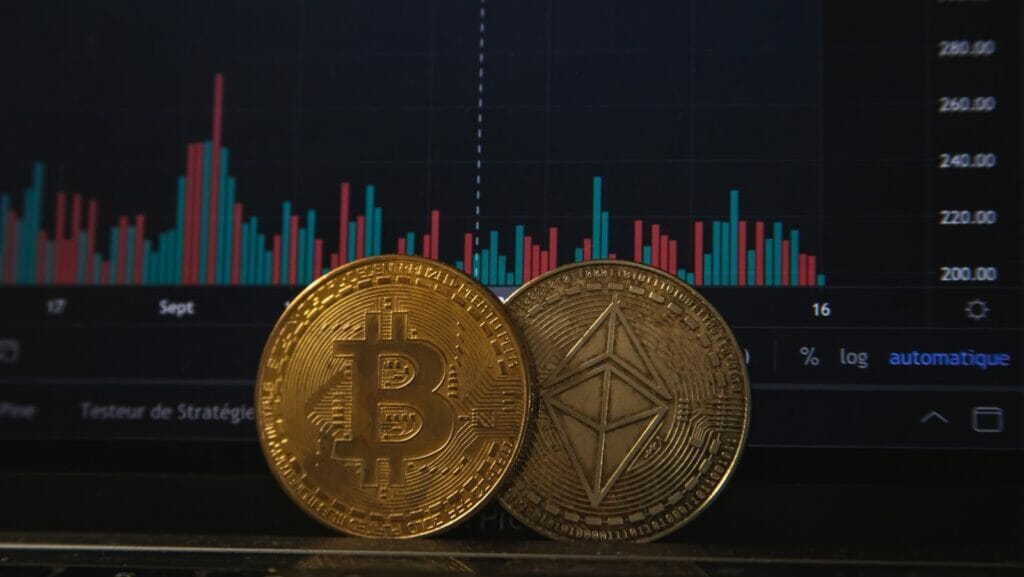Did you know that the global crypto market is expected to reach $4.94 billion by 2030? There’s no denying that this is an industry that’s thriving at the moment and doesn’t seem to be showing any signs of slowing down.
However, while there are lots of positives associated with crypto and clearly a lot of money to be made, there are also risks that you need to be aware of. Any good investor or entrepreneur has a risk management strategy in place so that they can protect themselves. With that being said, below, we are going to take a look at some of the different risk management tactics you can deploy for the crypto market.
Use Data Discovery Tools to Understand Your Data
The more you invest in crypto, the more data you’re going to accumulate. The more data you have, the harder it is to protect. However, data discovery tools can help you to keep on top of everything. These tools enable you to understand the data you have, where it lives, and who is able to access it. Most investors and businesses have data spread across multiple systems. The more complex your investments get, the more challenging it becomes to track everything. However, if you don’t, not only are you putting your crypto investments at risk, but you could be breaching privacy laws as well, such as CCPA and GDPR. Data discovery tools ensure compliance while saving you hundreds of hours thanks to the automatic AI-driven classification of many different data types, including sensitive data and personally identifiable data (PII).
Consider Implementing Risk Parity Strategies
Another way of reducing your risk is by looking into risk parity ETFs. To do this, you will build your investment portfolio by weighing the risk rather than building it based on dollars. Conventional portfolio construction involves assessing expected risk and returns and creating a portfolio that reduces the risk for a desired return. A traditional investor may have 40% bonds and 60% equities, which are weighted based on dollars.

However, with a risk parity portfolio, you will look at the risk contribution of every asset, and you’ll then build a portfolio that balances the assets without the expected returns being considered. This helps you to avoid the high-risk concentration that is associated with a typical investment portfolio.
Diversify Your Investment Portfolio
One thing you should never do in the world of investing is keeping all of your eggs in one basket. What we mean by this is that you shouldn’t purely invest in crypto and nothing else. The lure of cryptocurrency is very strong at the moment. If you play your cards right, the rewards can be significant. At the same time, this is not an adequate replacement for a diversified and well-balanced investment portfolio. You only need to look at the recent Covid-19 pandemic to see why diversification is key. When the lockdowns started to strike, a lot of businesses were left unable to open their doors. Those companies that diversified or had different income revenues survived while others struggled.
This is the same when it comes to investing. Because of this, it’s highly advisable to purely view your crypto assets as one kind of investment among a number of others that can boost your personal wealth. When you accept this, you’re then able to concentrate on building an investment portfolio that has risk diversification at the center. So, when one asset class fluctuates, you know you’re going to have other investments that will balance this out so that you’re not in the red.
Create a Secure Trading Ecosystem for Yourself
The risks associated with individual crypto coins don’t exist in a vacuum. Because of this, your trading ecosystem is just as vital as your coins. If you don’t choose a trading platform or wallet with care, your crypto investment could be at risk. The same applies to crypto-related scams and frauds. If you don’t educate yourself and stay up-to-date with the latest scams and hacks, you could leave your assets vulnerable, and someone could take advantage of this.

What this all means is that you need to be committed to creating a secure trading ecosystem that provides you with complete control, security, and privacy over your crypto assets. Join a crypto exchange that has a good reputation and lots of positive feedback online. Also, choose a secure wallet with care. We recommend dedicating a certain amount of time per day to staying up to date with everything that’s going on in the industry so that you’re aware of the latest hacks and any potential problems.
Learn How to Manage Your Emotions
You can have all of the best cryptocurrency investment strategies in the world, but if you don’t learn how to keep your emotions in check, you’re going to struggle to make a consistent profit. Investor sentiment drives the market. This is why we have a bear market and a bull market. Because of this, it’s critical that you understand your emotions and you don’t let them get the better of you. This will prevent you from panic selling or becoming a victim of FOMO, otherwise known as the Fear of Missing Out. You need to recognize when there is hype and fear in the market. You also need to prevent emotions and speculations from getting the better of you and becoming mixed up with your investment decisions. Keeping a level head is key.
Follow the 1% Rule
Last but not least, the 1% rule is an easy yet effective risk management strategy that a lot of investors follow. The premise is very simple: you shouldn’t risk over 1% of your total capital on a trade or investment. So, let’s say you have $10,000 you’re willing to invest, and you wish to adhere to the 1% rule; there are actually a number of different ways you can go about this. For example, you could purchase $10,000 worth of Bitcoin (BTC) and set a stop-limit order or a stop-loss order to sell at $9,900. What this means is that you’re basically going to be cutting your losses at 1% of your total investment capital. (1% of $10,000 is $100). Another approach is to use 1% of your total investment pool on a certain coin. For example, you may decide to buy $100 worth of ether (ETH). You don’t need to set a stop-loss order for this. After all, if you were to lose your entire ETH investment, you’d only be risking 1% of your entire investment portfolio.

The 1% rule doesn’t have an impact on the size of your investments. Rather, it’s all about how much you’re willing to risk on a specific investment. This is a good way of keeping everything in order and ensuring you don’t risk too much on one investment. This is a rule that can be used with any sort of investment, but you tend to find that it’s more commonly used in the world of cryptocurrency because of the volatility associated with the market. It can be very easy to get greedy when investing in cryptocurrency. You see a lot of other people making big money, and you want a slice of the pie. However, this can result in you putting too much money into one investment, and this can backfire and result in significant losses. This is why the 1% rule makes a lot of sense because it helps you to stay in control of everything.
It’s Imperative to Deploy Effective Risk Management Techniques When Investing in Crypto
So there you have it: some of the best risk management tactics to use for the crypto market. From using risk parity strategies to implementing data discovery tools, there are a number of different approaches you can utilize to protect your investments.
As the crypto market develops even further and more people get involved, it’s only going to become more and more important to protect your investments and invest with caution. This is why putting together a risk management strategy now makes perfect sense for the future.


More Stories
How Do Bitcoin Casino Games Operate?
Exploring the Practical Applications of Crypto For Beginners
Leading Crypto Day Trading Strategies